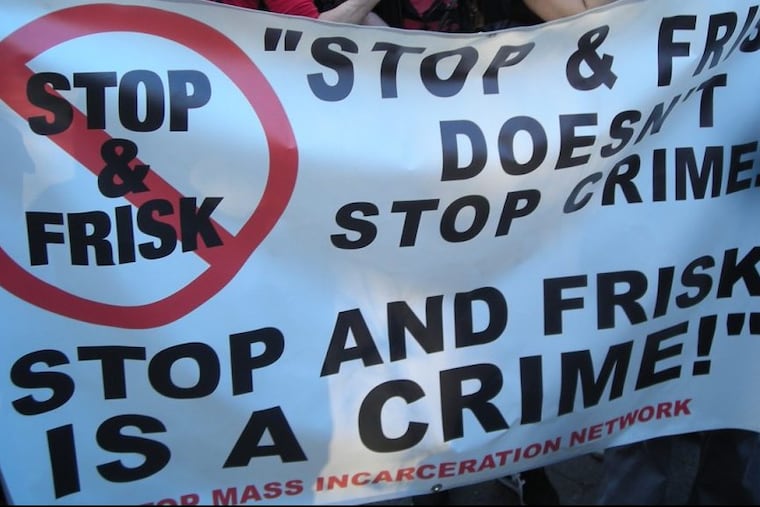Mayor Kenney’s promise to end stop-and-frisk in Philly got arrested | Editorial
It didn't take long after Mayor Kenney was elected in 2015 for him to begin dialing back on his campaign promise that "stop and frisk will end in Philadelphia, no question."

It didn't take long after Mayor Kenney was elected in 2015 for him to begin dialing back on his campaign promise that "stop and frisk will end in Philadelphia, no question."
In a gymnastic exercise reminiscent of Bill Clinton's defining the word is, Kenney later explained that he didn't mean Philadelphia police would no longer stop and frisk people, but that they would try harder to avoid racial profiling in deciding whom to accost.
"What we are going to stop is the random stopping of people, Latinos and African Americans, on the street and the cop asking, 'What are you doing here?' and making them empty their bag and empty their pockets. There is a balance between crime-fighting and being oppressive," Kenney said in a 2016 interview with the Al Dia News editorial board.
He's got that right. But more than a decade after Mayor Michael Nutter ratcheted up the use of stop-and-frisk as a tactic to reduce gun violence in Philly, police too often size up possible suspects by race and ethnicity in deciding whom to pat down.
That was confirmed by the ACLU of Pennsylvania, which in 2011 settled a lawsuit that contended stop-and-frisk, as practiced in Philadelphia, was racially biased. The settlement included a provision allowing the ACLU to monitor the program, but the city wasn't ordered to end it.
>> READ MORE: Terry v. Ohio: The decision behind 'stop-and-frisk' still stands, 50 years after the Supreme Court ruled | Opinion
Kenney recently reported that since his taking office the number of "pedestrian stops" by police had dropped 50 percent, and that a similar reduction had occurred in the number of stops that occur "without reasonable suspicion." But people of color still represent the majority of people stopped and frisked.
Police data show blacks were 50 percent of all pedestrians stopped and frisked last year, while whites were 37 percent. But blacks were 69 percent of all those detained and searched indoors, while whites were only 39 percent.
The indoor statistic becomes more glaring after last month's wrongful arrest of two African American men inside a Center City Starbucks.
But evidence suggests profiling by police isn't limited to individuals. Entire neighborhoods are being stereotyped based on how many blacks live in them.
That was the finding made by Villanova professor Lance Hannon, whose research of police data showed about 70 percent more frisks occurred in black neighborhoods, even in communities with very low crime rates.
So, what's the point? Nutter justified his use of stop and frisk as a desire to get more guns off the street. But besides the fact that few guns are actually retrieved, stop-and-frisk is being employed in neighborhoods where gun violence is an anomaly, and where blacks feel like suspects just because they are black.
Kenney's earlier tap dance on stop-and-frisk rightly pointed out the Constitution gives police the right to search criminal suspects. But suspicion of criminal activity must be based on much more than skin color, choice of attire, or the neighborhood a person calls home.
It's time to take another look at stop-and-frisk; more training appears necessary. Progress has been made since the ACLU suit settlement, but walking while black, driving while black, and even sitting while black still seem to constitute a crime in the minds of too many cops.